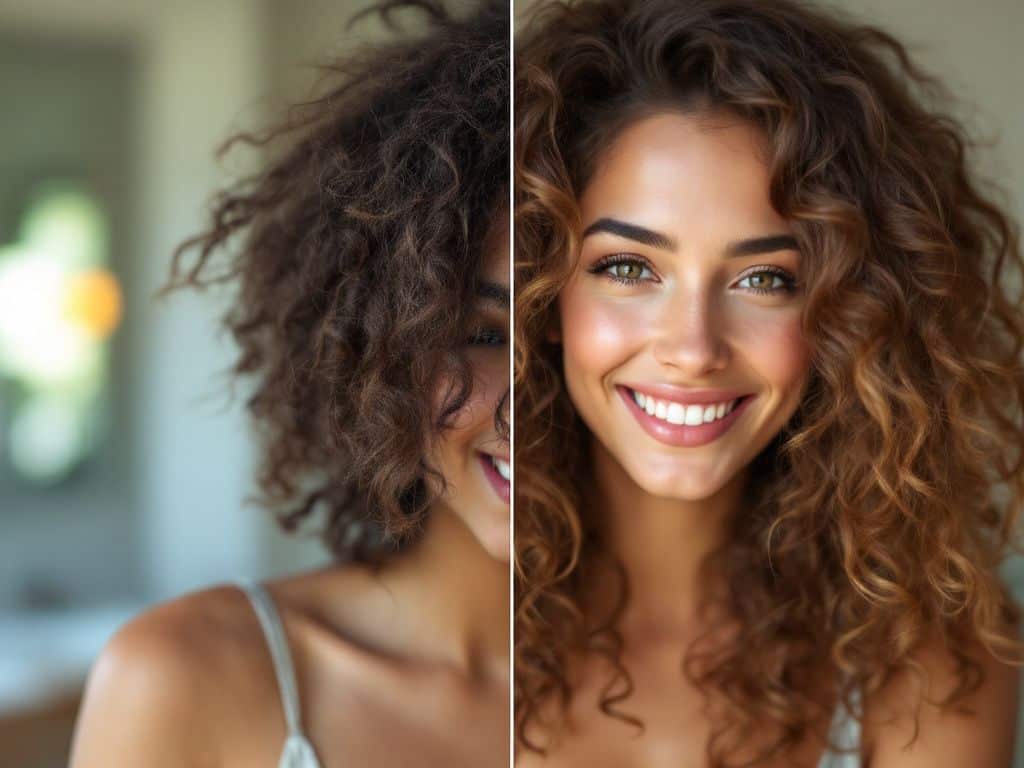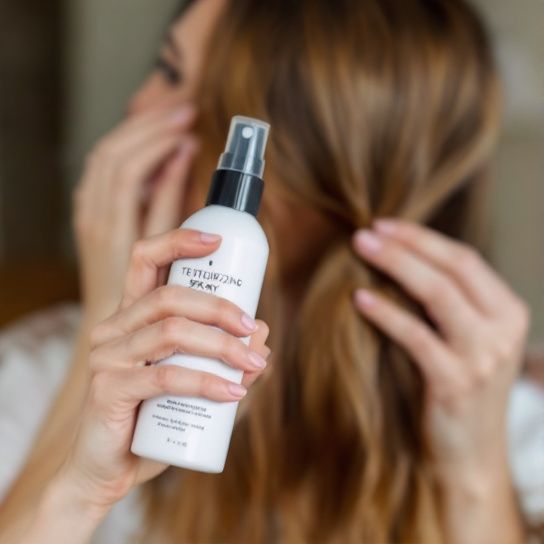
Ever stood in front of the mirror, hair dripping after a shower, and thought, “There’s gotta be a better way to air-dry this mess”? You’re definitely not the only one! Whether you’re dealing with curls, waves, or that oh-so-tricky straight yet frizzy mop, figuring out how to air-dry your hair without turning it into a puffball or a flat pancake is a universal struggle. But — and trust me on this one — air-drying hair? It’s not some mystical art. It can be easy and beneficial, reducing heat damage while flaunting your natural texture. Let’s dive deep into the ins and outs of air-dry techniques catered to each hair type.
Why Bother with Air-Drying?
First off, let’s chat about why air-drying’s worth trying. The obvious perk? You’re keeping your hair away from heat. Anytime you’re not blasting it with a dryer, you’re doing it a favor. Heat tools can wreak havoc over time, leading to breakage, split ends, and a general lack of luster. By learning air-dry techniques, you save your strands from the sizzling, keeping them healthier in the long run. Whether your maid with curls or tagged with fine hair, preserving what nature gave you is a win. Plus, who really enjoys standing with a hairdryer for eons anyway?
Air-Dry Techniques for Different Hair Types
Embracing Your Curly Locks
Dealing with curly hair? You probably already know, it’s got a mind of its own. But that’s what makes it fabulous! The goal here is definition and hydration, minus frizz.
- Begin Right in the Shower: The air-dry magic starts here. Use a moisturizing shampoo and a rich conditioner. Once you rinse, apply a leave-in conditioner while it’s still damp to seal in that moisture. Trust me, drying off without proper preparation can dry out curls like no one’s business.
- Scrunch Away but with Care: With your leave-in conditioner applied, don’t just towel-rub your curls – gently scrunch them with a microfiber towel or an old T-shirt. These fabrics reduce friction and frizz more than your average bathroom towel.
- Define with Gel or Cream: A curl-friendly gel or cream gives you hold and definition. Work the product through your curls scrupulously – cupping sections of your hair in your palms and forming them into curls is a sincere curl-defining hack.
- The Waiting Game: Yep, now you simply wait. Avoid touching your curls while they dry to prevent frizziness and inconsistent curl patterns. Go do something you’ve been putting off!
Taming the Waves

Wavy hair is like the laid-back sibling of curls. It has its own charm but can easily fall victim to flatness or frizz.
- Hydration is Key: Like its curly counterparts, wavy hair loves moisture. Start with a sulfate-free shampoo and a conditioner that’s not too heavy but offers enough hydration to keep those waves plump.
- Add a Little Support: A light wave-enhancing mousse can breathe life into your waves. Distribute it when your hair’s damp and scrunch from ends to roots, encouraging shape without weighing it down.
- Twist and Dry: To give your waves some extra flair, try the twisting technique. Section hair and loosely twist to encourage more form and reduce frizz.
- Keep It Cool: Waves unfurl best when they’re left undisturbed. If time is of the essence, consider sitting in front of a fan. It speeds up the process without the heat!
Navigating the Straight-Haired Route

Straight hair may seem easier, but maintaining volume and avoiding oiliness is the battle. The method’s a little different here.
- Bust the Grease: Go light on conditioning the scalp in the shower; focus on the ends. Over-conditioning the roots can make straight hair limp.
- Add a Volumizing Factor: To avoid the dreaded ‘straight but stuck to your head look’, work some volumizing mousse or foam into the roots while your hair is damp.
- Tousle, Don’t Rub: As your hair dries, gently tousle it with fingers from the mid-lengths to the ends. This not only creates movement but also lifts hair away from the scalp slightly.
- A Sprinkle of Texture: Once mostly dry, a touch of texturizing spray amps up interest and keeps straight hair looking polished without being lifeless.
Mistakes to Dodge While Air-Drying
You’ve got the techniques down, but let’s dodge a few traps, shall we?

- Over-Touching: Futile finger-combing or self-conscious scrunch-clawing? These lead to frizz and disrupt your curl patterns. Say no.
- Heavy Products Overloads: Selecting products that are too rich or heavy can weigh down any hair type, particularly fine or wavy hair. Less is often more.
- Skipping Protection: Even though it’s air-dry, a leave-in conditioner or thermal protectant can minimize UV damage and support throughout the day.
Why Sticking with Air-Dry Techniques Matters
Sticking with these air-dry techniques unlocks the full potential of owning your hair type. Once you nail down “your way”, your hair transforms, shining with natural health and vigor. Moreover, those pockets saved on electrical bills and salon visits? Waved right into sight.
Mix it up. Bend the rules if you must—there’s nothing wrong with a little personalization. What works today might need adjustment down the road, as your environment, seasons, or whims change.
Sometimes, juggling the perfect balance feels overwhelming, but reminisce this: mastering air-drying is not about eliminating texture concerns permanently. It’s an evolving journey toward finding what translates best for you.
So go forth, explore these air-dry techniques that liberate both hair and spirit — bask in less heat, more you.
Frequently Asked Questions
What are the benefits of air-drying clothes and hair?
Air-drying clothes and hair offers several benefits. For clothes, air-drying is free, easy on the environment, and helps retain the shape and color of garments longer compared to using a dryer[1]. For hair, air-drying prevents damage from direct heat, helps retain internal moisture, and can lead to stronger, healthier, and thicker-looking hair[4][5>.
How can I air-dry clothes effectively to avoid wrinkles and mildew?
To air-dry clothes effectively, ensure good air circulation by not overstuffing the clothesline. Wring out towels and sheets before hanging them, and flip them when one side is dry. Hang garments with the heaviest side at the bottom to smooth out wrinkles. Also, fold your clothes as soon as they are dry to prevent wrinkles and mildew[1>.
What are the key steps for air-drying hair to achieve the best results?
For air-drying hair, start by using shampoo and conditioner formulated for your hair type. Brush your hair in the shower and rinse with cold water to help the cuticle lie flat. Gently blot dry with a microfiber towel to remove excess moisture without roughing up the hair. Apply leave-in products tailored to your hair type and avoid touching your hair while it dries to prevent frizz and maintain definition[2][3][4>.
How can I air-dry clothes and hair indoors when there is no outdoor space?
To air-dry clothes indoors, use an extra spin cycle to remove excess water, place clothes on wide hangers, and use a fan to circulate air. Keep windows open for fresh air and consider using a dehumidifier to speed up the drying process. For hair, use a microfiber towel, detangle gently, and wrap your hair in a microfiber towel for a few minutes before air-drying. You can also use a fan to speed up the drying process[1][3][4>.
References


Leave a Reply